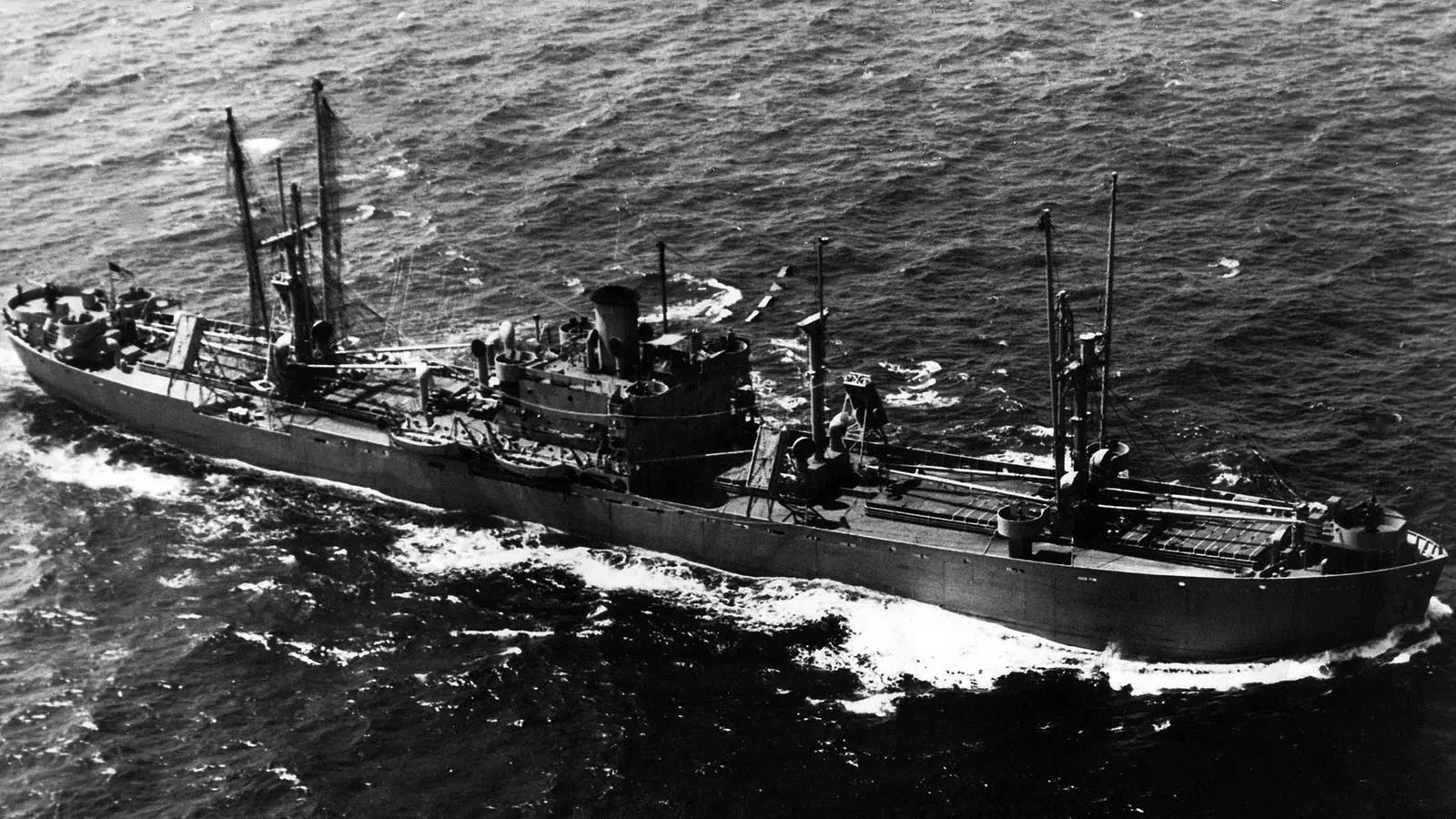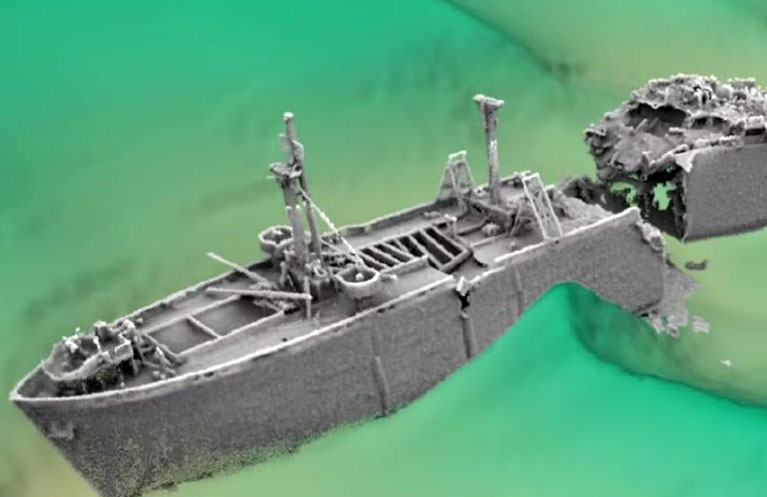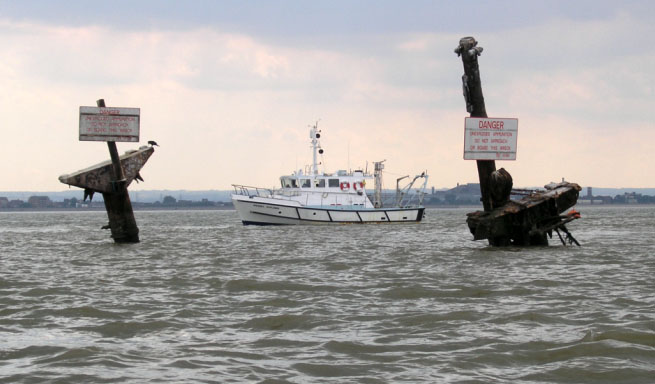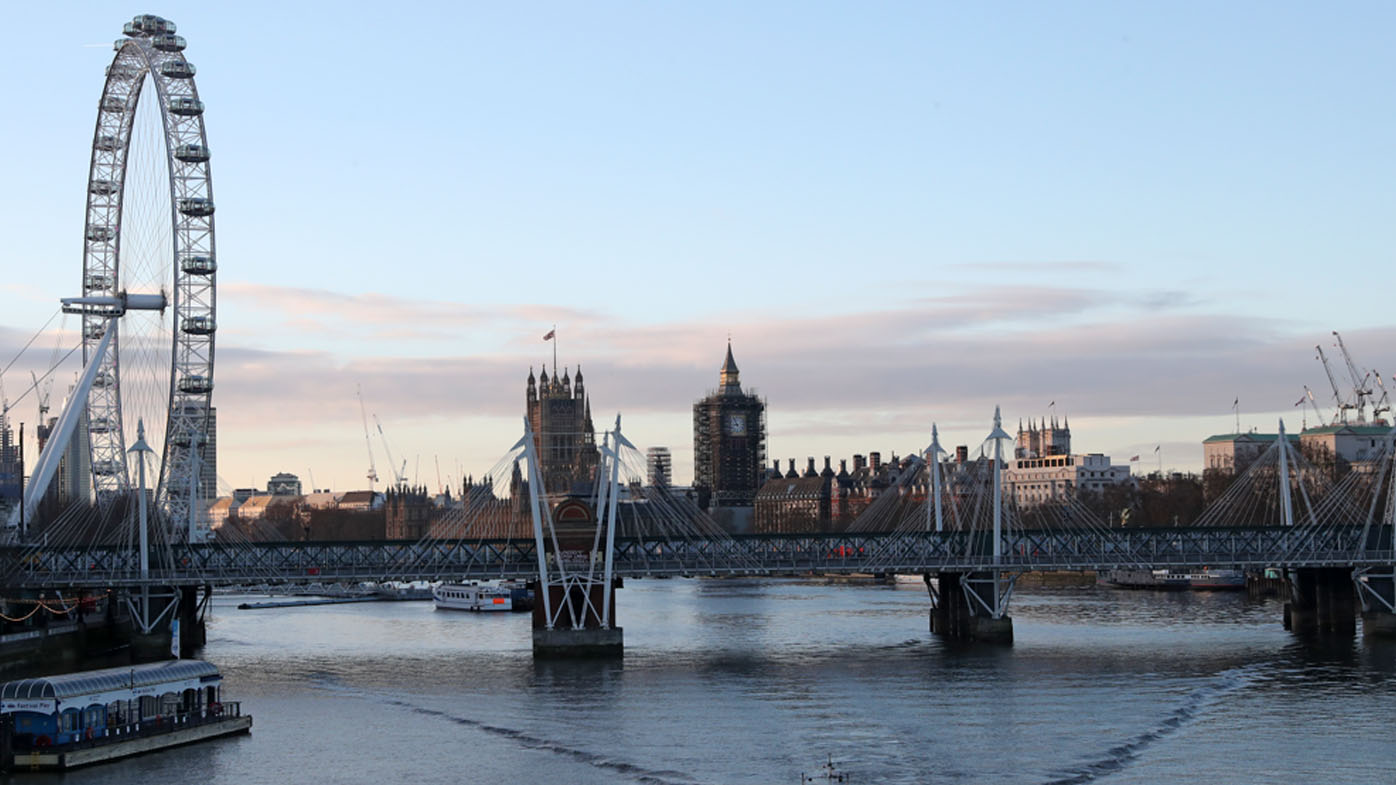More than 700 ship wrecks are beneath England's River Thames but none are as menacing as the SS Richard Montgomery.
The US vessel was built in World War II and was sailing to Britain in August 1944 with a cargo of munitions when struck disaster as it reached the Thames estuary.
While waiting to join a convoy of other supply vessels, stormy weather caused the SS Richard Montgomery to drag anchor and flounder on a sandbank.
READ MORE: Divers uncover a surprising discovery near the wreck of the Titanic

Despite a salvage operation moving half of its cargo from the stranded vessel, efforts were halted when its hull cracked and the ship completely flooded.
Today, the wreck continues to rest on the sandbank, just 2.5km from shore in the mouth of the busy Thames estuary. The ship masts are clearly visible above the water during all levels of tide.
But it's what's remaining under the waves that is most concerning for authorities and local people.
Officials estimate there are about 1400 tonnes of highly deadly explosives in the forward holds of the wreck.
A survey in 2000 by the UK government's Maritime and Coastguard Agency (MCA) found the ship likely contains more than 9000 US-made explosives.
These include 286 giant 900kg 'blockbuster' bombs, more than 2500 cluster bombs and 4439 other explosive devices.
READ MORE: WWII shipwreck still leaking explosives after 80 years

For years, experts have warned if the wreck exploded it would create one of the biggest non-nuclear explosions in history and level the nearby port of Sheerness which has 11,000 residents.
A detonation risks triggering a "tsunami-like wave" which would sweep up the River Medway, flooding towns and villages.
There is also concern it would impact the River Thames, the UK's busiest inland waterway.
Professor David Alexander, from University College London, is an expert in risk and disaster reduction and has studied the SS Richard Montgomery in detail.
He told 9news.com.au an explosion would trigger a "top event" involving a column of water and debris 3000 metres high.
READ MORE: WWII bomb discovered in Victorian backyard

"There have been various ship explosions in history that have reduced substantial vessels to small-scale debris, flung over a radius of kilometres," Professor Alexander said.
"However, the unknown quantity is whether all the bombs would explode at once. There could be a situation of smaller explosions producing instability and a high likelihood of further detonations."
Professor Alexander also said a report in 1970 by UK military experts highlighted a potential five-metre high tsunami if the ship exploded.
While he believes the chances of one are small, a wave of water would cause major damage.
"If one occurred, it would inundate the town of Sheerness and wash across the Isle of Grain petrochemicals and LNG storage facility, possibly catching fire and proceeding in flames up the River Thames towards central London," Professor Alexander said.
The hazards posed by the SS Richard Montgomery have not gone unnoticed by UK authorities.

The wreck is surrounded by an 800m exclusion zone and its is monitored 24 hours a day by maritime safety officials.
And in 2023 the masts of the ship that remain above the waves are set to be cut off and removed to minimise the risk of them falling onto the wreck below.
In November 2022, expert divers ended weeks of investigating the most hazardous parts of the vessel and clear any obstructions ahead of the masts being trimmed.
Professor Alexander said it's critical the explosives remaining in the SS Richard Montgomery are removed and points to the success of the Canadian government in making World War II shipwrecks in its waters safe.
"It can be done ... Rather than evacuating all the local population for six months, I think they should build temporary blast walls around Sheerness and the Isle of Grain, use robots and systematically take out the ordinance."
Source: https://ift.tt/AWKkuCy
Comments
Post a Comment